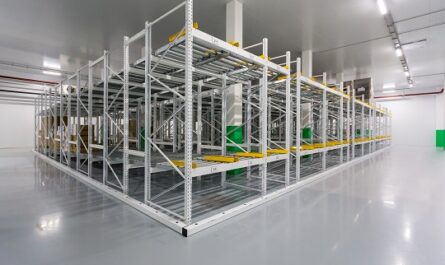In this post, I’ll talk about why mapping business processes is important. When I say “business process,” I mean all of the operational tasks in the supply chain, from taking sales orders and planning production to delivering finished goods to customers and billing them.
I’m sure that you already have your own way of doing business. But, has this business process been mapped out on “paper”? Or, everything just works and you can’t see the whole process?
Before we talk more about this important and interesting topic, make sure you’ve also joined the scmguide telegram channel to keep up with the latest blog posts and learn more about supply chain management.
Table of Contents
What is business process mapping
Business process mapping is the act of mapping out all your business processes on “paper.”
Okay, when I say “paper” here, I don’t mean real paper. Instead, I mean a file that everyone can see.
What should this business process mapping include?
The quick answer is, all of them.
Yes, all processes.
Starting with how the Sales team gets orders from customers, then how to make a Sales Plan, which will later be turned into a Production Plan.
Also, how the materials are ordered based on the Production Plan continues until the finished goods are delivered to the customer and an invoice is made.
What does a business process map look like?
The business process map is a flow chart that shows how the business runs as a whole, including the process order, lead time, PIC, required documents, and the system used.
All of this should be on a business process map, so you can see how the business works and how each activity in one function affects the other.
Why you should create a business process map
The next question is whether making a business process map is important.
Isn’t it also true that the business can’t run without it?
True, business processes still run without a business process map.

But if you work in supply chain management and someone asks you, “Do you know the whole process?”
Can you tell if the current business processes are effective and efficient?
Or, are you sure all functions know how the business works as a whole and how their actions affect other functions?
All functions use the same business processes?
By mapping your business processes, you can see how your business is running now.
The same business process will be known to everyone.
And can you tell if your current business processes are effective and efficient or if they still need to be improved?
Business process maps will make this easier because everything will be written down. Everyone can see the same thing, regardless of how they understand it.
You might also like:
- 10 Ways to Reduce Supply Chain Costs by a Huge amount
- 4 Elements for More Effective Supply Chain Management
How to create a map of business processes
The important question now is how to map business processes.
To be sure, you should talk with every function in your organization.
You can talk about one function separately from another. Ask them how they run their business right now. And that includes the system they are using right now.
If some processes overlap with other functions, you can talk to these functions about the processes that are currently running. This is done to make sure that each function knows exactly how the operation should be done.
If there are operations that are unclear or haven’t been talked about, now is the time to create a process flow. So all operations, especially those involving more than one function, are clear.
After you have mapped out the business processes for each function, your job is to combine all the business process maps into a single map.
It will help you run your organization’s business processes.
When there is a conflict between one function and another, you can go back to the business process map you made.
What are the advantages of a business process map?
Once your business process map is done, what can you do with it?
What can a business process map be used for?
What are the advantages of a business process map?
Let’s take them one by one.
Can figure out how the current business process is going
First, you can, of course, figure out if your current business processes are running well and efficiently or not.
Could there be process duplication?
Or, maybe your business process is taking too long and using too many of your resources?
With a business process map, you’ll be able to see everything.
Can make improvements
Once you know how effective and efficient your business processes are, the next step is to improve the ones that don’t meet these standards.
You could eliminate process duplication, for example. Or, putting the process that is in the wrong function back where it belongs.

When you can see the whole business process, you can make the changes that need to be made.
Why?
Because you’ll be able to see how changes to one function affect other functions. Don’t let changes to one function hurt the business process as a whole.
As a reference for how business processes work
All functions must have the same understanding of how business processes are run.
If you don’t have a business process map, it’s possible that each function has a different meaning from the others.
As a result, there will be a lot of conflict within the organization.
This is what can be avoided by using business process maps.
All will be referring to the same business process.
As a basis for switching to ERP systems
An ERP system will only work if you have clear business processes.
With a business process map, you can see which processes have been automated and which are still done by hand.
With this information, you can make a development plan for implementing an ERP system.
As an introduction for new employees
Every new employee at a company must know how the business is run there.
You can use this business process map to train each new employee.
So, they would all have the same understanding from the first day they joined.
You might also like:
- 4 Reasons Why Using Local Suppliers Is More Profitable
- 5 Things That Can Go Wrong with Your Supply Chain
Who needs to be involved in mapping business processes?
All functions must, of course, be involved in the mapping process for this business process.
They are the ones who run the business processes of the organization. They are the ones who affect and are affected by the activities of other functions.
So, it makes sense that all functions should be involved in mapping out these business processes.
Conclusion
Creating a map of your business processes is important because it will become a guide for your operations.
With a business process map, you can figure out if the current processes are effective and efficient or not.
This business process map can also be used to make changes to ongoing processes.
Include all functions within the organization in this business process mapping activity.
So, all functions will have the same understanding of how business processes should be run.
Hope it’s useful!
Share this article with your other coworkers so they can also learn from it. Join the scmguide telegram channel to keep up with the latest posts on this blog and learn more about supply chain management. You can use any of the articles on this blog for whatever you want, even for profit, without having to give credit.

 by
by 

